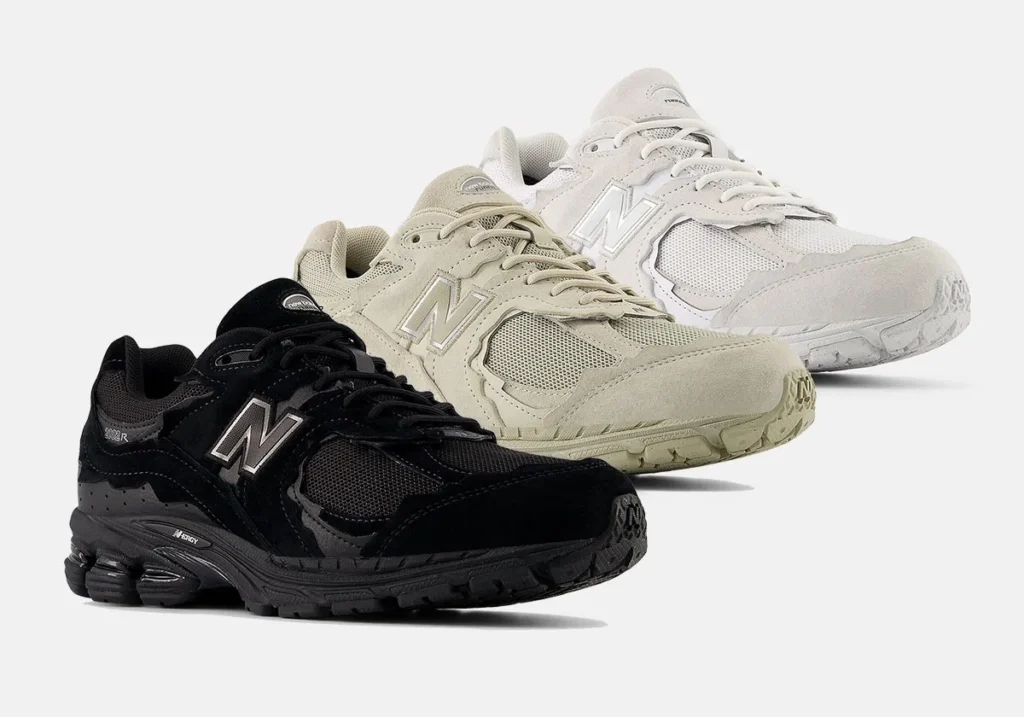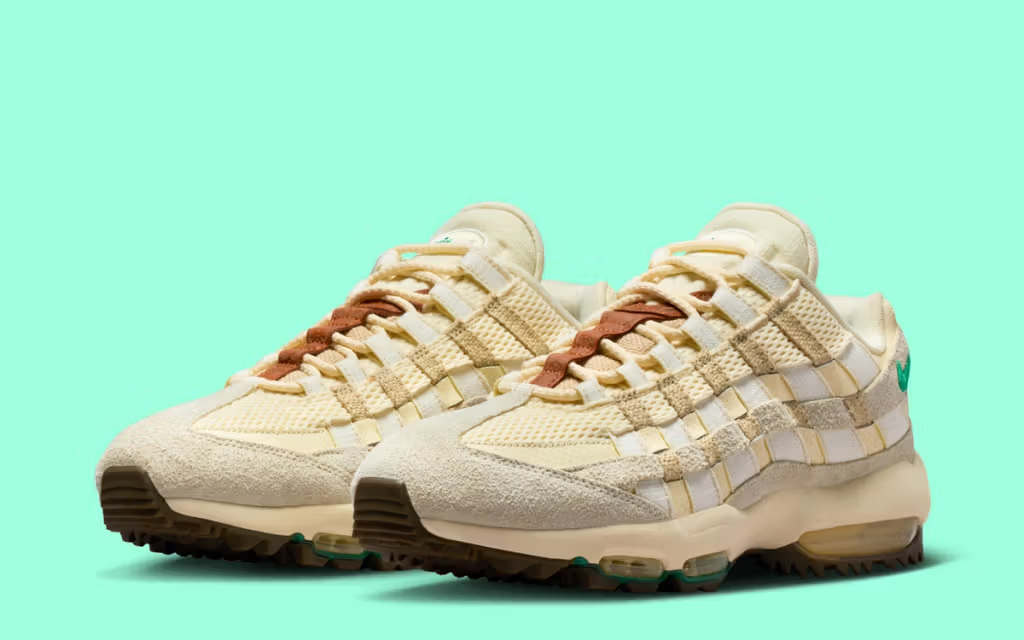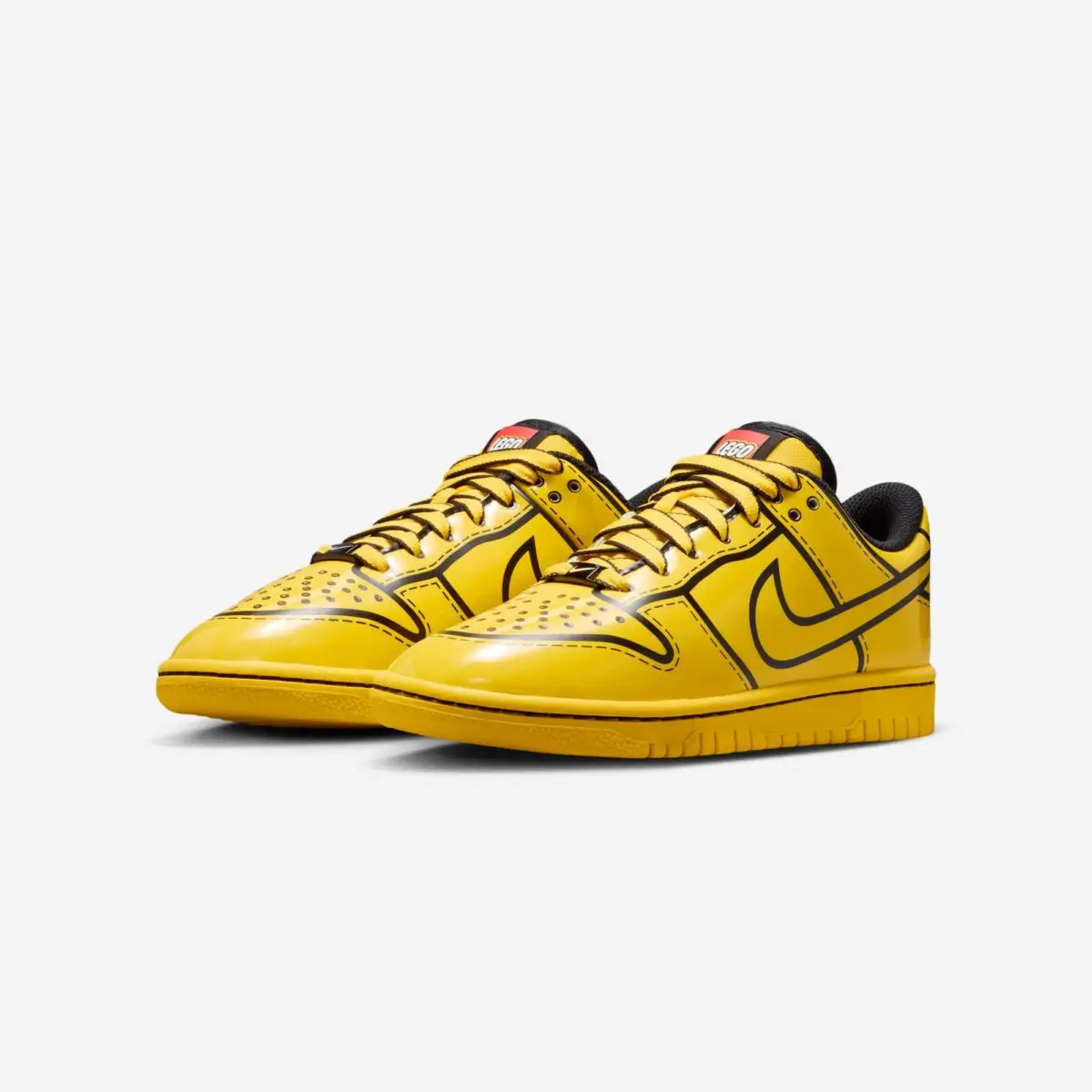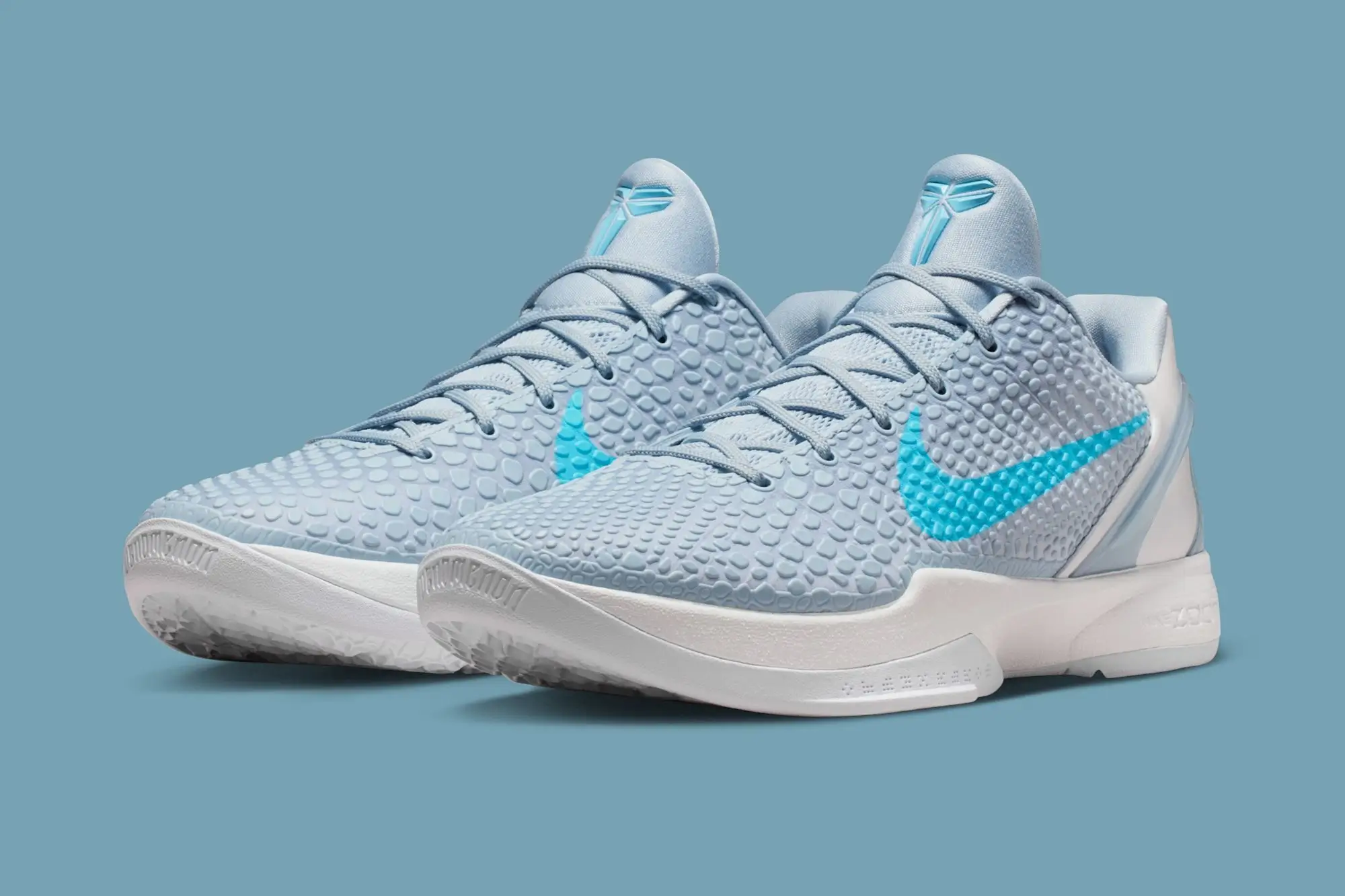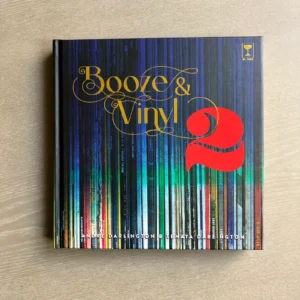The New Balance 2002R “Protection Pack” represents one of those rare sneaker stories where an archival silhouette, initially overlooked, transforms into a global phenomenon through thoughtful reimagination. Originally released in 2010 as the New Balance 2002, the model was a performance runner that landed quietly in the brand’s catalog. A decade later, its revival under the 2002R update coincided with a moment when fashion sought imperfection, distress, and authenticity. Enter the “Protection Pack,” a series that turned jagged edges, rough suede overlays, and cut-out aesthetics into a design language that resonated far beyond sneaker enthusiasts.
The Concept of “Protection”
The name itself carries dual meaning. On one hand, “Protection” refers to the exaggerated paneling and reinforced layers that give the sneaker a sense of armor, a defense against the elements of wear. On the other, it plays with the irony of deconstruction: the overlays appear torn and unfinished, almost as if the protective covering has been shredded, leaving the shoe both vulnerable and resilient. That contradiction is the genius of the pack—it sits between fragility and strength, craft and chaos, control and spontaneity.
Design Details: The Beauty of Distress
At first glance, the 2002R “Protection Pack” appears like a sneaker mid-explosion. Roughly cut suede pieces layer over mesh bases, with no two edges looking perfectly straight. Each overlay is intentionally jagged, frayed, and raw. Instead of polished precision, the design celebrates irregularity.
Colorways like “Rain Cloud” and “Sea Salt” highlight the neutral, tonal approach that New Balance often favors, allowing texture and silhouette to do the storytelling. The “Black” and “Phantom” variations lean darker, presenting a moodier take on the same distressed framework. Every pair features the ABZORB midsole and N-ergy cushioning system—technologies that root the shoe in its running DNA while offering contemporary comfort.
What’s most striking, though, is how the sneaker feels unfinished yet refined. It’s not a DIY custom but a carefully orchestrated study in imperfection. The jagged suede isn’t sloppy; it’s surgical. The design reframes what luxury and craft can look like in sneakers.
The Rise of Deconstruction in Shoes
The “Protection Pack” doesn’t exist in isolation. It belongs to a wider movement that has defined sneaker design in the 2010s and 2020s: deconstruction. Virgil Abloh’s “The Ten” collaboration with Nike in 2017 set the tone, showing that exposed foam, zip ties, and inside-out builds could command cultural attention. Brands like Maison Margiela had long explored similar aesthetics in high fashion, but the mass sneaker audience hadn’t embraced it until then.
The New Balance 2002R “Protection Pack” took that energy and translated it into something distinct. Instead of industrial cut-and-paste, it leaned into New Balance’s heritage of suede and mesh. Rather than shocking with bright colors or oversized logos, it relied on subtle disruption. The shoe became a conversation piece not because it screamed but because it whispered chaos in a controlled manner.
Release and Reception
When the first drop landed in 2021, demand far outstripped supply. The “Rain Cloud” colorway, in particular, became an instant grail, reselling at multiples of retail price. Collectors, streetwear fans, and casual wearers alike gravitated toward the silhouette. The irony was not lost: a forgotten performance runner had suddenly become the most sought-after lifestyle sneaker in New Balance’s arsenal.
Social media amplified the pack’s momentum. On Instagram, sneaker photographers highlighted the jagged textures in close-up detail. On TikTok, styling videos paired the sneakers with oversized trousers and relaxed tailoring, showing how easily they bridged streetwear and contemporary menswear. Forums and blogs quickly declared the “Protection Pack” a modern classic.
View this post on Instagram
Why It Worked: Timing and Identity
Several factors explain why the “Protection Pack” struck such a chord. First, timing: post-pandemic fashion leaned toward authenticity, imperfection, and pieces that looked worn or distressed. Raw edges mirrored the mood of a world recovering from fracture. Second, identity: New Balance had already built credibility through collaborations with Aimé Leon Dore, JJJJound, and Salehe Bembury, positioning itself as the thinking person’s sneaker brand. The “Protection Pack” felt like a natural extension of that ethos.
Most importantly, the sneakers allowed wearers to express individuality. Each jagged panel looked slightly different, and the raw design suggested a sneaker not obsessed with being pristine. It was a product that celebrated flaws, an attitude that resonated deeply in an age of curated feeds and polished appearances.
The Broader New Balance Renaissance
The success of the 2002R “Protection Pack” fits into the broader New Balance renaissance. Once dismissed as a “dad shoe” brand, New Balance has re-emerged as a leader in both performance and lifestyle segments. Models like the 550, 990v5, and 9060 have all contributed to a resurgence that feels authentic rather than forced. The “Protection Pack,” however, crystallized something unique: it proved that New Balance could innovate within its own archives, not just through collabs.
For the brand, the pack was not just a bestseller—it became a blueprint. The jagged, deconstructed aesthetic has since influenced other inline releases and inspired countless customs. It reinforced New Balance’s ability to set trends rather than follow them.
Culture
The shoe’s cultural impression extends beyond fashion. In art and design circles, the “Protection Pack” has been cited as an example of wabi-sabi—the Japanese aesthetic philosophy that finds beauty in imperfection. In music and street culture, artists have been spotted wearing the sneakers as part of understated fits, signaling taste without shouting brand allegiance. For collectors, the “Protection Pack” stands as a turning point in the story of New Balance, akin to what “The Ten” meant for Nike or what the Yeezy 350 meant for Adidas.
Looking Ahead
As of today, the “Protection Pack” continues to release in new colorways, though nothing has matched the fever of the original trio. Yet the legacy is secure. Sneaker history will likely remember it as the series that turned the 2002R into a cult classic, that helped solidify New Balance’s lifestyle dominance, and that captured the zeitgeist of distressed design.
Looking forward, the challenge will be evolution. Can New Balance replicate the magic without diluting the concept? Can the jagged edge aesthetic be extended to other silhouettes, or is it best left as a singular moment? Whatever the answer, the “Protection Pack” has already cemented its place as one of the most important sneaker stories of the decade.
Flow
The New Balance 2002R “Protection Pack” is proof that design doesn’t always need to be clean, polished, or futuristic to feel new. Sometimes the most radical move is to leave edges uncut, to embrace imperfection, and to craft sneakers that look like they’ve lived a story before even touching the pavement. In doing so, New Balance not only redefined a forgotten runner but also rewrote its own cultural standing.
The shoe is not just footwear—it is philosophy. A reminder that in imperfection, there is protection; in chaos, there is beauty; and in broken edges, there lies a new kind of wholeness.
No comments yet.

